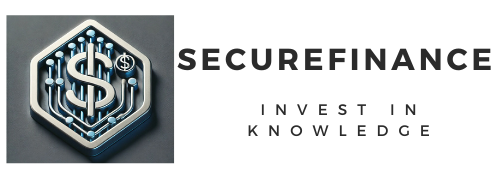
A luxury car isn’t just a mode of transportation—it’s a statement, a reward, and for many, a lifelong dream. Whether it’s the roar of a finely-tuned V8 or the whisper-quiet cabin of a cutting-edge electric sedan, owning a luxury vehicle is a goal worth chasing. But here’s the catch: chasing it blindly could throw your finances off track.
The good news? You don’t need to be a millionaire to roll up in a Mercedes-Benz, BMW, or Tesla. You just need the right roadmap. That’s what this article is all about—how to save smartly for your dream luxury car without sabotaging your financial health.
So, let’s hit the gas pedal and dive into practical, proven, and optimistic steps that can help you go from dreaming to driving.
Identifying the Right Luxury Car for Your Needs
The first step isn’t saving—it’s deciding. What does “luxury” mean to you? For some, it’s Italian leather and wood grain finishes. For others, it’s eco-friendliness wrapped in innovation. Research is key here.
Compare models, trims, resale values, and features. Don’t just get swept up in hype or aesthetics. Consider practicality, reliability, fuel efficiency, and technology. Tools like Kelley Blue Book, Car and Driver, and Edmunds offer in-depth reviews that can help you make an informed choice.
Pro Tip: Write a “dream car profile” with must-haves, nice-to-haves, and deal breakers.
Calculating the Real Cost Beyond the Sticker Price
Here’s a financial reality check: that $70,000 car might end up costing you $90,000+ over time.
There’s the base price, of course. But don’t forget taxes, registration fees, luxury surcharges, insurance premiums, and interest if you’re financing. Not to mention maintenance, repairs, and depreciation.
Create a spreadsheet that accounts for:
-
Purchase price
-
Sales tax
-
Dealer fees
-
Insurance estimates
-
Estimated maintenance (based on brand)
This one step will change how you see your savings target—and bring clarity and precision to your plan.
Setting SMART Financial Goals
Goals only work when they’re clear. Use the SMART framework:
-
Specific: “Save $25,000 for a BMW 5 Series.”
-
Measurable: Use apps to track weekly progress.
-
Achievable: Based on your income and current expenses.
-
Realistic: Don’t plan to save $2,000/month if you only make $3,500.
-
Time-bound: Set a deadline—e.g., 18 months.
Divide your total goal by your timeline to get a monthly savings target. Then… automate it.
Creating a Car-Specific Savings Plan
Open a separate savings account labeled “Luxury Car Fund.” The psychology works—when your goal has a name, it becomes real.
Use auto-transfers from your paycheck. Even $100/week becomes over $5,000 in a year. Set calendar reminders to review and adjust your savings rate monthly.
Bonus: Look into high-yield savings accounts that offer better interest than traditional banks.
Trimming Monthly Expenses Smartly
Cutting back doesn’t mean cutting out all your fun—it means getting smart with where your money goes. To accelerate your luxury car fund, evaluate your recurring expenses. Subscriptions, dining out, unused gym memberships—they all add up.
Start with a monthly expense audit:
-
Cancel or downgrade streaming services you don’t use
-
Choose home-cooked meals over takeout at least 3x a week
-
Bundle insurance or phone plans for discounts
-
Use cashback and rewards cards (responsibly)
The goal isn’t to deprive, but to reprioritize. Each dollar saved is a mile closer to your dream ride.
Pro Tip: Use the 50/30/20 budgeting rule as a base—then tweak it to fit a car-focused plan (e.g., 40/30/30 with 30% going to your savings).
Using Budgeting Apps and Automation Tools
Let technology do the heavy lifting. Budgeting apps not only track your money—they also nudge you when you’re veering off path.
Top choices include:
-
YNAB (You Need A Budget) – Ideal for goal-based saving
-
Mint – Tracks bills, subscriptions, and net worth
-
PocketGuard – Shows you exactly what’s safe to spend
Set up auto-savings rules like:
-
“Round up purchases” into your car fund
-
Deposit every cash-back reward
-
Save a portion of every bonus or windfall
Set and forget works—especially when paired with notifications and visual trackers.
Saving Early and Leveraging Compound Interest
The sooner you start, the better. Even small, consistent contributions add up thanks to compound interest. That’s not magic—it’s math.
Example: Saving $300/month at 4% APY for 3 years gets you $11,600+. But wait 12 months to start, and you’ll lose $1,400+ in gains. Time is literally money.
Open a high-yield savings account or even consider conservative, short-term investments like:
-
Money market funds
-
Certificates of deposit (CDs)
-
Treasury bonds
These options keep your money safe, liquid, and growing steadily.
High-Yield Savings Accounts and Investment Options
Let your savings work for you. Instead of stashing cash in a 0.01% interest bank account, explore these:
| Account Type | Average APY | Risk Level | Liquidity |
|---|---|---|---|
| Online High-Yield Savings | 3.5–5% | Very Low | Very High |
| CDs (12–24 months) | 4–5.25% | Low | Medium |
| Treasury Bills | 4.6–5.1% | Very Low | High (after 4 weeks) |
| Robo-advisors (low-risk) | 4–7% | Medium | Medium |
Pro tip: Diversify. You can keep part of your savings in a liquid account and the rest in higher-yield products with a short lock-in.
You Can Also Read : Ferrari vs. Lamborghini: Which Supercar to Buy with Bitcoin?
Differentiating Between Impulse Desires and Long-Term Value
That limited-edition model looks sleek now… but is it really what you want or just shiny new temptation?
Impulse can derail your savings. Avoid FOMO by:
-
Creating a 7-day wait list for purchases
-
Reminding yourself why you’re saving before making big buys
-
Asking: “Will this matter in 6 months?”
You’re not just buying a car—you’re investing in a lifestyle. That means focusing on performance, reliability, and long-term satisfaction over trends.
